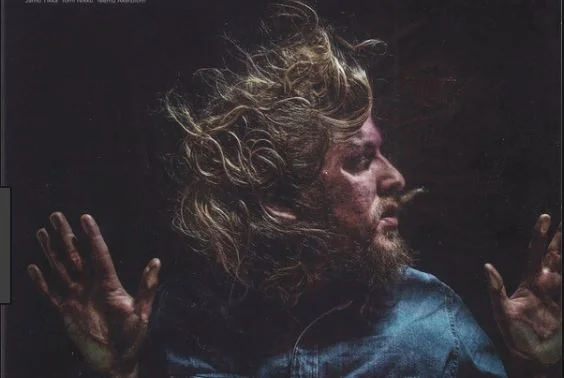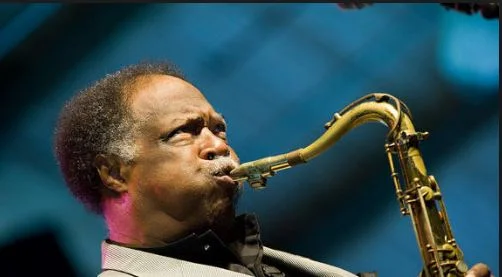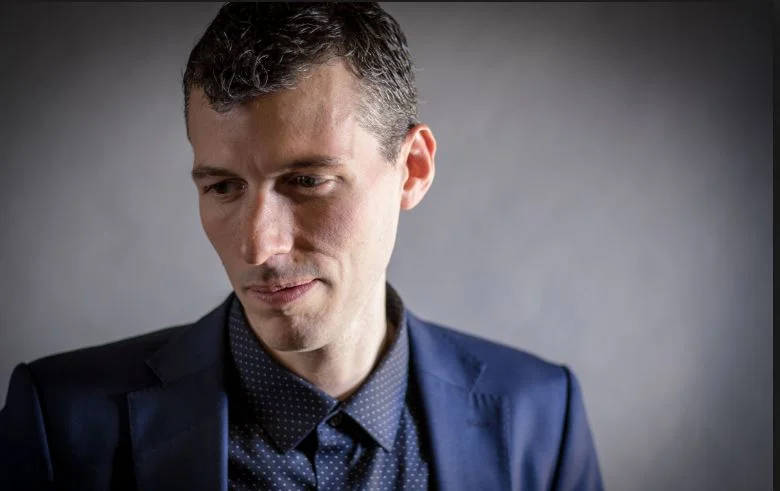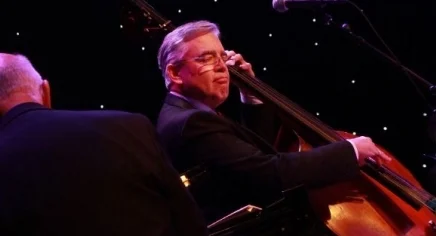With Jazz Batá 2 (Mack Avenue), Cuban pianist/bandleader Chucho Valdés returns to the small-group format that he used for his 1972 album Jazz Batá (Agrem). That album—recorded with just piano, bass, and batá drums—heralded the later success of Valdés’ group Irakere, an Afro-Cuban big band that forwarded the evolution of Latin jazz by an order of magnitude.
The graceful, fleeting original “Even The Sun Sets”—the penultimate track on Anne Sajdera’s latest album, New Year (Bijuri Records)—gives listeners a hint of the jazz pianist’s strongly classical orientation. You can hear the decades of training in her well-practiced touch, her smooth legato, her confident attack on the keys. What Sajdera builds with this masterful technique, though, is sturdy post-bop constructs, accentuated with razor-sharp rhythms and commanding horn syncronizations. The new album showcases nine such tunes, each a cleanly delineated musical idea in its own right.
Earlier this year jazz pianist Harold Mabern faced the considerable challenge of compressing almost 60 years of playing and recording into a three-week run at the New York jazz club Smoke. A complete retrospective of Mabern’s storied career would have to include all of the albums he’s recorded to date (25+ as a leader and 80+ as a sideman) and then some—most notably his gigging with too many jazz greats to list here and his contributions to hard bop, soul jazz, and post-bop. For all of this heavy lifting Mabern has been dubbed the Iron Man, the moniker that crowns his latest release for Smoke Sessions Records, The Iron Man: Live at Smoke. By the end of the two-disc set listeners will likely agree that Mabern just might be some kind of a jazz superhero.
Scandinavian jazz is its own thing. Affective, free-spirited, and daringly improvisational. Finnish jazz, a vibrant constituent of the Nordic scene, pushes this individualism to an uncommon degree. Producer Matti Nives champions the effort through We Jazz, a music collective whose wingspan covers a magazine, an annual jazz fest, and a record label. This fall three new releases on the Helsinki-based We Jazz Records affirm the ascendancy of the Finnish small group approach to new jazz.
Saxophonist Houston Person and bassist Ron Carter first played together as a duo on their 1990 standards album Something In Common (Muse). What these two distinguished players had in common then was a diehard appreciation for the musical alchemy behind well-crafted songbook tunes. What they have in common now is six albums and nearly 30 years of collaboration on this voluptuous material. This year’s Remember Love (High Note) marks the next installment in their noteworthy oeuvre.
In January 2017, drummer Sanah Kadoura fell in her New York apartment and hit her head on the sharp corner of a windowsill. Three days later she was on her way to a gig when she became disoriented and unable to breathe, and by the next day she’d lost her vision, speech, and ability to walk. At the hospital she was diagnosed with a traumatic brain injury, a condition that can cause permanent neurological damage and is sometimes fatal. This chilling diagnosis threatened to sideswipe Kadoura’s budding career: She was forced to cancel the session for the album that she was just two days away from recording—her debut release, Hawk Eyes.
To appreciate the experimental nature of Weaver (PEOPLE), the third album of the trio Twin Talk, compare the short track “Miniature I” with its counterpart, “Miniature II.” Same disarming melody in two starkly contrasting arrangements. The first, the electronic version, uses a drum track behind the voice in unison with the sax, both reverb-laden, repeating the hook. The second, the acoustic version, uses hollowly ringing gankogui bells behind an upright bass and unadorned sax, also repeating the hook. These two tracks alone are a study in creative musicianship.
In the fall of 2019, Juilliard will launch a new master’s degree program in vocal jazz. It’s an impressive list of singers’ names on the advisory committee: Carla Cook, Kurt Elling, Hilary Gardner, Lenora Helm, Carmen Lundy, Dianne Reeves, and Charenée Wade. And there’s a tough audition to get in—singers must perform from the same categories of required roots tunes as the instrumentalists (gospel/country, swing/songbook, jazz standard, and Afro-Hispanic/Latin) and improvise in each category, and the skill of all instrumentalist and vocal applicants will be judged by the same yardstick. (For what it’s worth, once they’re in, instrumentalists might have to sing as part of their juries, so that yardstick clearly has two sides.)
When Juilliard-trained trombonist Nick Finzer was ready to release his first album he didn’t want to wait for a label to take notice. So he debuted the record, Exposition, on his own newly minted jazz imprint, Outside In Music, in 2013. Post-launch, the record label took on a life of its own (and the album did well, too: two tracks snagged ASCAP Herb Alpert Awards for Young Composers). Today Outside In Music represents approximately 25 artists and offers them a full suite of creative services—album and video production, media outreach, branding, content creation, artist management—to help them bring their artistic visions to the world. In keeping with the ever-morphing music business, Finzer continues to experiment with new formats for music promotion. “I want to…be ready for what’s coming next,” he says. For the up-and-coming Outside In artists below, that’s good news.
For his third album as a leader for ECM, Where The River Goes, Austrian guitarist Wolfgang Muthspiel reconvened most of the personnel from Rising Grace, his second album for the label (Eric Harland replaces Brian Blade on drums). The quintet met up in February of this year at the same picturesque studio in the Alpes-de-Hautes-Provence region of southern France where they’d recorded the earlier release, in many ways continuing the creative discussion that started then.
Anwar Robinson has the kind of voice that could stop traffic—rich, soulful, and reverberant. Beyond his innately spectacular instrument, Anwar is well-schooled in just about all vocal styles—jazz, blues, R&B, pop, musical theater, spirituals. So it’s no wonder that in 2004, he moved quickly into the winners’ circle on the fourth season of American Idol, one of the most popular shows in television history. What’s surprising is his return to community-based service after reaching such a personal and professional peak. Today, Anwar acts as the Artistic Music Director at the United Palace, a stunning, early 20th century performance space in Washington Heights, arguably one of the most diverse neighborhoods in Manhattan. Recently, All About Jazz caught up with Anwar to discuss how music continues to lead him to take on new challenges. And yup—that voice still stops folks in their tracks.
For the last decade, free-bop legend Jay Clayton has been conducting regular “scat labs” out of the Manhattan teaching space that she shares with NEA Jazz Master Sheila Jordan. In ScatLab, jazz singers of all levels of experience meet up to trade twos and fours, riff on traditional blues heads, and improvise on well-known songbook tunes. The purpose here is to practice spontaneous composition in a safe space, away from the microphone and the audience.
Canadian-born singer/songwriter Joni Mitchell, ninth on Rolling Stone’s list of The 100 Greatest Songwriters of All Time, turns 75 this month. Though best known as a 1970s folk-pop musician, Mitchell’s jazz influences run deep: She’s collaborated with the likes of Jaco Pastorius, Wayne Shorter, Herbie Hancock, Pat Metheny, and, most notably, Charles Mingus. Jazz singers love interpreting Joni Mitchell material because of this jazz influence—the innately singable melodies, the deeply colored harmonies, the poetic lyrics.
Multi-instrumentalist Camille Thurman kept her singing under wraps all throughout her time at the famed LaGuardia High School for the Performing Arts in New York City. And in college at SUNY-Binghamton, she wasn’t even a music major—she earned a bachelor’s degree in geological science. But in less than a decade as a professional singer and woodwinds player, she’s made her mark as one of the most promising—and intriguing—young musicians around.
The Jazz Foundation of America’s Annual Jazz Loft Party, now in its 27th year, is a one-night-only, feel-good-all-year, mini music fest. With three stages, a host of celebrated performing artists, a bountiful spread, and glittering city views, it’s hard to imagine a better way to spend an autumnal Saturday evening in Manhattan.
Even as an ex-pat engineer in Saudi Arabia, French-born saxophonist Stéphane Spira found opportunities to play. And when he returned to Paris from the Middle East in the 1990s, “I decided to quit everything for music,” he said. That decision has paid off.
The Verve/Columbia Records release Love Is Here To Stay makes jazz history primarily because of the two vocal legends whose names rest above the title. True, Diana Krall and Tony Bennett have teamed up on duets before, but never for an entire album. And with this project—all Gershwin tunes—the two demonstrate just how abiding American Songbook material is.
When students and faculty discuss The New School for Jazz and Contemporary Music, the same phrases recur. Creative collaboration. Artistic freedom. Mutual respect. These phrases could be taglines for the pedagogical approach of Dr. Keller Coker, who assumed the deanship of the school in March 2017. Eighteen months in, Coker has already helped the school manoeuver several shifts in direction, including the influx of many prestigious faculty members; the relocation of the experimental jazz club, The Stone, to the school’s campus; and the rollout of new academic opportunities for students both stateside and abroad. These initiatives all facilitate Coker’s vision for the New School’s jazz program—to give students what they need to be leading-edge musicians in the 21st century.
In 1936 the Moscow Children’s Music Theater commissioned composer Sergei Prokofiev to write a symphonic fairy tale to help young audiences learn the instruments of the orchestra. In his Soviet-era opus Peter and the Wolf, the unique sounds of the different instruments conjure up the many characters of the story, which serve as mnemonic devices for children. Earlier this year, the New England Jazz Ensemble (NEJE) released their own commissioned version of the Prokofiev work, this time using the instruments of a jazz big band and multiple jazz grooves to tell the classic tale. The eponymous self-produced recording, which contains four other Peter-related compositions, is more than an educational tool, however. Like the original, it’s a masterful work of art in its own right.
Indianapolis-based alto sax player Amanda Gardier finds musical repetition calming, and she uses the technique quite often in her compositions. On her debut album Empathy (Green Mind Records), she experiments with drone-like harmonies, repeated riffs, and cyclical melodies—to deceptively soothing effect. As a listener, it’s easy to settle into the lustrous tones and elegant structures in her compositions, remaining only subliminally aware of the tension that runs throughout her music. But that would be to miss the thrill of it.




















